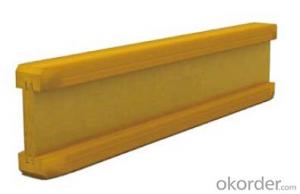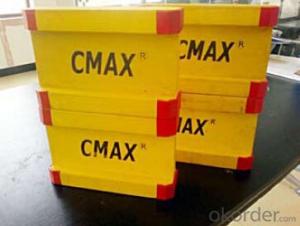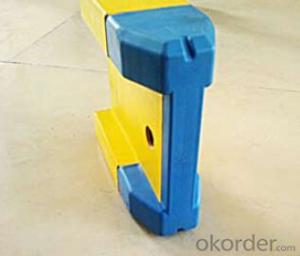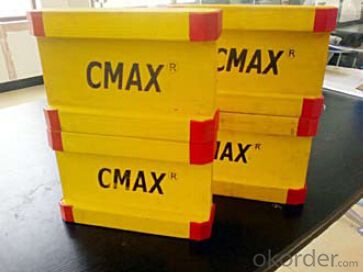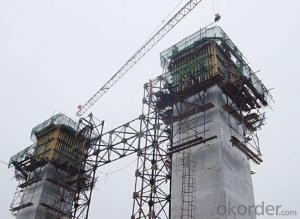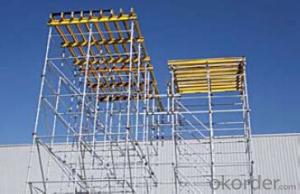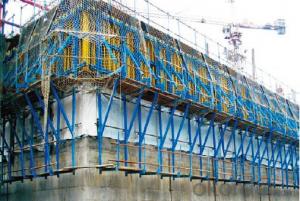Timber-Beam for formwork and scaffolding system
- Loading Port:
- Tianjin
- Payment Terms:
- TT OR LC
- Min Order Qty:
- 50 m²
- Supply Capability:
- 1000 m²/month
OKorder Service Pledge
OKorder Financial Service
You Might Also Like
Characteristics:
◆ Standardized production lines.
Supply capability: 3000m/day, Lmax = 6600mm.
◆ Finger jointing of the flange and web, the strength of timber beam is highly improved.
Max. shearing force failure load:40KN
◆ Well treated to prevent from water penetration or erosion, so the service life maximally extended.
Normally, CNBM timber beam H20 can be used for 4 to 5 years, the exact using time would depend on maintenance & storage.
◆ Robust caps at the end of the girders protect against damages.
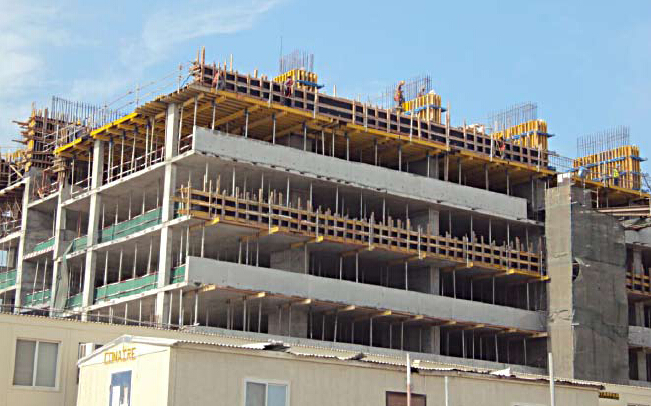
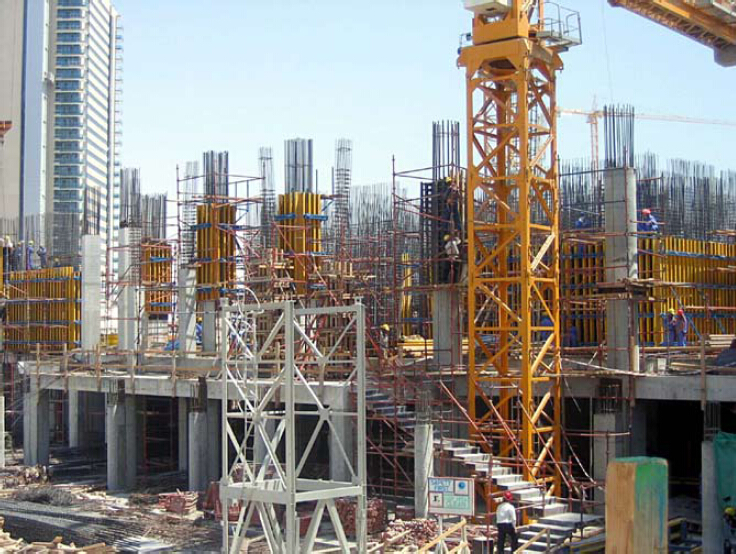
- Q: Can steel formwork be used for architectural concrete slabs with embedded elements?
- Yes, steel formwork can be used for architectural concrete slabs with embedded elements. Steel formwork provides the necessary strength and durability to support the weight of the concrete and any embedded elements. It allows for precise shaping and detailing, ensuring the desired architectural design is achieved. Additionally, steel formwork can be easily re-used, making it a cost-effective option for such applications.
- Q: Can steel formwork be used for both monolithic and composite construction?
- Yes, steel formwork can be used for both monolithic and composite construction.
- Q: Can steel formwork be used for precast concrete beams with complex geometries?
- Yes, steel formwork can be used for precast concrete beams with complex geometries. Steel formwork offers numerous advantages for creating complex shapes and designs in precast concrete beams. Steel is a strong and durable material that can withstand the pressures and forces exerted during the concrete pouring and curing process. It can be easily fabricated to create the desired shape and size of the beam, making it suitable for complex geometries. Steel formwork also provides excellent dimensional accuracy, ensuring that the precast concrete beams maintain their intended shape and dimensions. This is particularly important for beams with complex geometries, as any slight variation in shape could affect their structural integrity. Additionally, steel formwork offers a smooth and high-quality finish to the concrete surface. This is essential for beams with complex geometries, as a smooth surface ensures proper load distribution and reduces the risk of cracking or other structural issues. Furthermore, steel formwork can be reused multiple times, making it a cost-effective option for creating precast concrete beams with complex geometries. The versatility and durability of steel formwork make it a preferred choice for many construction projects, including those involving complex precast concrete beams. In conclusion, steel formwork is a suitable and practical choice for creating precast concrete beams with complex geometries. Its strength, durability, dimensional accuracy, and smooth finish make it an ideal solution for achieving the desired shape and design in these beams.
- Q: What are the different types of formwork spacers used in steel formwork?
- There are several different types of formwork spacers used in steel formwork, including plastic spacers, metal spacers, and adjustable spacers. Plastic spacers are commonly used due to their lightweight nature, ease of installation, and durability. Metal spacers are often used in heavy-duty applications or where extra strength is required. Adjustable spacers are versatile and allow for flexibility in creating different formwork thicknesses.
- Q: How does steel formwork affect the overall accuracy of concrete structures?
- Steel formwork can significantly impact the overall accuracy of concrete structures in a positive manner. The use of steel formwork ensures precise alignment and dimensional accuracy, resulting in a more accurate and uniform structure. Steel formwork provides a rigid and stable framework, which helps to maintain the desired shape and dimensions of the concrete during the pouring and curing process. This stability minimizes any potential deformation or distortion, ensuring that the final structure is true to its design specifications. Furthermore, steel formwork allows for a smoother surface finish of the concrete. The smoothness of the formwork surface reduces the chances of any imperfections or irregularities in the final structure, enhancing its aesthetics and overall quality. The use of steel formwork also allows for greater control and precision in the placement and positioning of reinforcement bars, which are critical for the structural integrity of the concrete. The accurate placement of reinforcement bars ensures that they are properly embedded within the concrete, leading to a stronger and more durable structure. In addition, steel formwork provides a high level of reusability, which further contributes to accuracy. Its durability allows for multiple uses, reducing the chances of wear and tear that could affect the formwork's alignment and accuracy. Overall, the use of steel formwork in concrete construction plays a crucial role in ensuring the overall accuracy of the structure. It provides stability, precise alignment, and smooth formwork surfaces, resulting in a more accurate and aesthetically pleasing concrete structure.
- Q: How does steel formwork accommodate for different concrete pouring heights?
- Steel formwork can accommodate for different concrete pouring heights by being adjustable and customizable. The formwork panels can be easily adjusted or cut to the required height, allowing for flexibility in creating various concrete pouring levels. Additionally, steel formwork systems often include adjustable accessories such as props or telescopic beams that can be extended or retracted to match the desired pouring height. This adaptability ensures that the steel formwork can effectively accommodate different concrete pouring heights during construction projects.
- Q: Can steel formwork be used for structures with high wind resistance requirements?
- Yes, steel formwork can be used for structures with high wind resistance requirements. Steel is a strong and durable material that can withstand the forces exerted by high winds. When used as formwork, steel provides a stable and rigid framework for pouring concrete, ensuring that the structure maintains its shape and integrity even under extreme wind conditions. Additionally, steel formwork can be designed and reinforced to meet specific wind load requirements, making it suitable for constructing buildings in areas prone to high winds or hurricanes.
- Q: Can steel formwork be used for high-rise construction projects?
- Yes, steel formwork can be used for high-rise construction projects. Steel formwork provides durability, strength, and stability required for the construction of tall structures. Its ability to withstand high pressures and repeated use makes it suitable for the demanding conditions of high-rise construction. Additionally, steel formwork allows for efficient and precise construction, resulting in quality finishes and faster project completion.
- Q: How is steel formwork cleaned and maintained?
- Steel formwork is commonly used in construction projects due to its durability and reusability. To ensure its longevity and to maintain its quality, regular cleaning and maintenance are crucial. Here are some steps to clean and maintain steel formwork: 1. Remove concrete residue: After each use, any concrete residue should be removed from the steel formwork. This can be done by chipping away the hardened concrete using a hammer or chisel. Care should be taken not to damage the formwork surface during this process. 2. Power washing: Once the larger chunks of concrete are removed, power washing can be done using a high-pressure water jet. This helps to dislodge any remaining concrete particles and dirt from the surface of the formwork. Make sure to use appropriate safety measures, such as wearing protective clothing and goggles, while power washing. 3. Chemical cleaning: In cases where stubborn stains or concrete deposits are difficult to remove through power washing alone, a chemical cleaning solution can be used. There are various commercially available concrete removers that can be applied to the formwork surface. Follow the manufacturer's instructions for proper usage and safety precautions. 4. Rust removal and prevention: Steel formwork is susceptible to rusting, which can weaken its structural integrity. Regularly inspect the formwork for any signs of rust and remove it using wire brushes or sandpaper. After rust removal, apply a rust-inhibiting primer or a protective coating to prevent further rusting. This should be done before storing the formwork to ensure it remains in good condition. 5. Proper storage: When not in use, steel formwork should be stored in a clean and dry environment. Avoid exposure to moisture, extreme temperatures, and corrosive substances, as these can adversely affect the formwork's quality. Proper stacking and organization can also prevent damage and deformation during storage. Regular maintenance and cleaning of steel formwork is essential to ensure its longevity and reusability. By following these steps and taking appropriate precautions during cleaning and storage, steel formwork can be kept in optimal condition for future construction projects.
- Q: Are there any specific considerations for using steel formwork in seismic zones?
- Yes, there are specific considerations for using steel formwork in seismic zones. Steel formwork is known for its high strength and rigidity, which makes it suitable for withstanding seismic forces. However, it is essential to ensure that the steel formwork is designed and installed correctly to withstand the expected seismic loads. This includes using robust connections, adequate bracing, and proper reinforcement. Additionally, the formwork should be inspected regularly to identify any potential vulnerabilities or damage that could compromise its performance during an earthquake.
Send your message to us
Timber-Beam for formwork and scaffolding system
- Loading Port:
- Tianjin
- Payment Terms:
- TT OR LC
- Min Order Qty:
- 50 m²
- Supply Capability:
- 1000 m²/month
OKorder Service Pledge
OKorder Financial Service
Similar products
Hot products
Hot Searches
Related keywords
